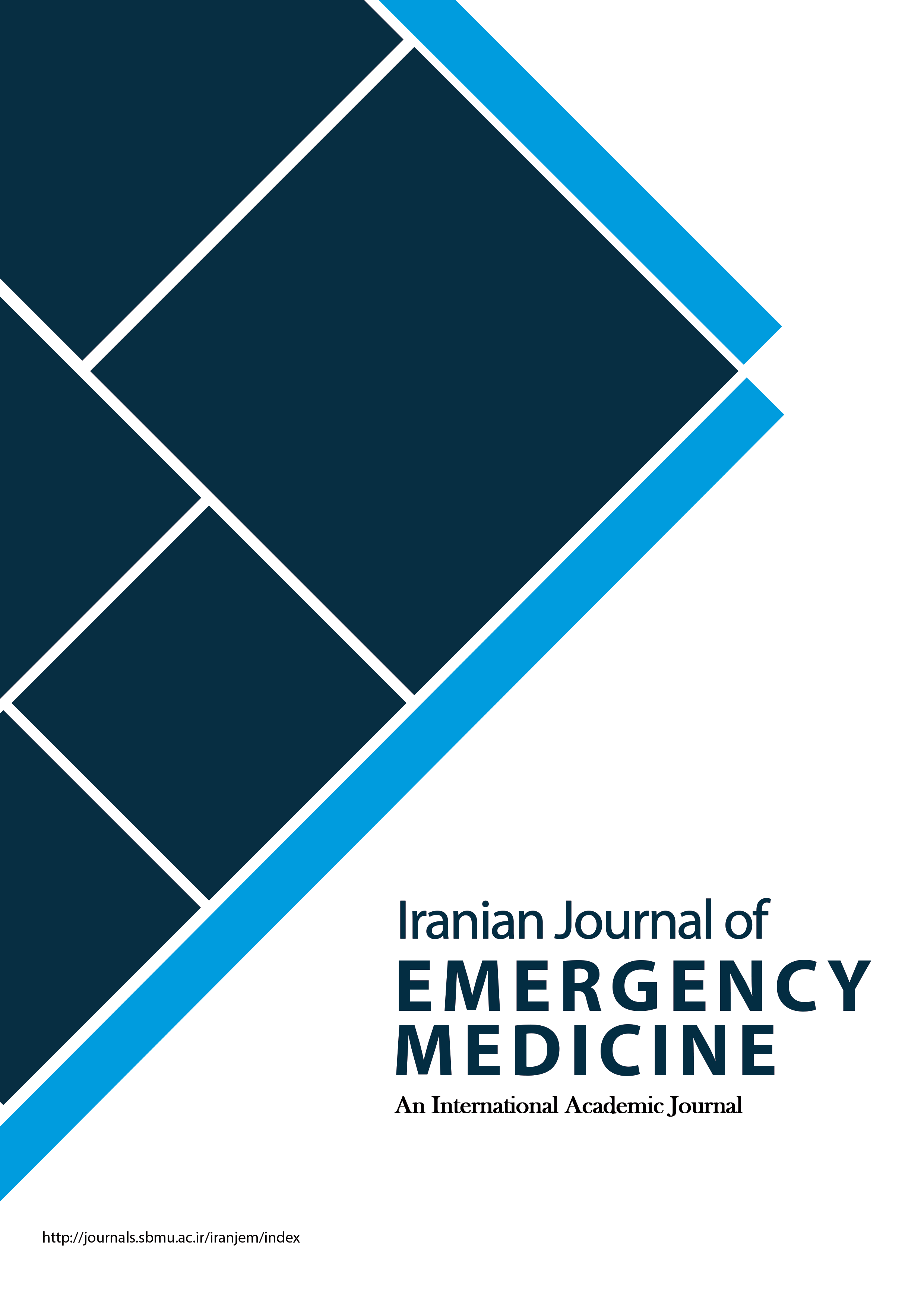The automatic vending system and disposable equipment in emergency unit and effect on work procedures in Rasoule Akram hospital in Tehran
Iranian Journal of Emergency Medicine,
Vol. 7 No. 1 (2020),
28 March 2020
,
Page e20
https://doi.org/10.22037/ijem.v7i1.26507
Abstract
Introduction: Currently, due to the limited funding of the health care system as an industry, it is necessary to provide vital services without the least waste of time and resources, and one of these is the provision of equipment for the provision of services. The aim of this study was to determine the availability of equipment for serving patients referred to the CPR department of Hazrat Rasoul-e-Akram Hospital in Tehran, as well as the problems associated with any pharmacy system and automated inventory system. Method: This descriptive cross-sectional study was performed on emergency patients in the CPR department of Rasoul-e-Akram Hospital of Iran University of Medical Sciences during the year 1397 (sample size 200) that needed emergency services. The availability time of equipment was measured in two groups by the pharmacy method and using the automatic sales mechanism. Results: The average time taken to receive supplies from the time it took with the pharmacy system was 167 seconds, while it took 28.3 seconds with the automatic inventory system, which was a significant difference (p-value <0.001). The weaknesses of this system were: lack of connectivity to the Hospital HIS, inadequate equipment, crowded CPR, device charging, and lack of RFID cards. Conclusion: The results showed that the use of this device for delivery of the equipment in the emergency ward increased the speed of the work, and the availability of the device for other emergency departments and its use for delivery of medication was also necessary.
- Automatic Inventory System
How to Cite
References
1. Lotfi, M., S. Rouhani, and M. Noori Kupaee, Provide a model to identify the effects of organizational resource planning systems on the organization's quality management system. Quarterly Journal of Industrial Management, Faculty of Humanities, 1390. 6(16): p. 73-88.
2. Caglio, A. and M. Newman, Implementing Enterprise Resource Planning Systems ERP: Implications for Management Accountants, in International Conference on Information Systems ICIS. 1999: Charlotte, USA.
3. Galandere-Zile.I, Applicability of ERP Systems for Knowledge Management in the Context of Quality Management. LNCS 2004. 3084: p. 276–289.
4. Harrington, J., ISO 9000 and Beyond: from Compliance to Performance Improvement. 1997, New York: McGraw Hill Book Co.
5. Haug.A, Arlbjørn.J.S, and Pedersen.A, A classification model of ERP System Data Quality. Industrial Management and Data Systems, 2009. 109: p. 1053-1068.
6. Ceyda.C and Hayri.B, Fuzzy quality function deployment based methodology for acquiring enterprise software selection requirements. Expert Systems with Applications, 2010. 37(4): p. 3415-3426.
. 7. Kim, H.M., Representing and Reasoning About Quality Using Enterprise Models, Enterprise Integration Laboratory, in Faculty of Applied Sciences and Engineering. 2000, University of Toronto: Library university of toronto.
8. Kim, H.M., Enterprise Models of Measurement: A Comparison of Existing Models Used for Quality Management and E-business. Operational Research, 2002. 2: p. 85-92.
9. P, I. and Nahar.N, Quality, Impact and Success of ERP Systems: A Study Involving Some Firms in the Nordic-Baltic Region. Journal of Information Technology Impact, 2006. 9(1): p. 19-46.
Safi Khani, H., The role of quality management in determining the pattern of hospital resource allocation, in The first national conference on hospital resource management, M.o.H.a.M. Education, Editor. 1381: Tehran, Iran.
Mostafa Nazari, M., Smart Hospital Facilities - The Importance of Smart Infrastructure in Hospitals, in A step towards comfort. 1395: Pillars of value.
Marketing, A.S.C., Lean health care storage systems for supply chain logistics. 2017, http://www.southwestsolutions.com/automated-supply-carousel/lean-healthcare-storage-systems-supply-chain-logistics#sigProIdbaf436bb41: USA.
S, A., K. S, and B.M. H, Reducing Waiting Time in Emergency Department at Ayatollah-Kashani Hospital Using Simulation. Modiriat salamat, 1392. 16(51): p. 84-94.
K, L.E., et al., Transforming Hospital Emergency Department Workflow and Patient Care. INFORMS Journal on Applied Analytics, 2015. 45(1): p. 58-82.
Jabbari Beyrami, H. and M.A. Jaafarabadi, The effect of modern managment method on improving of scale of determining the task of emergency patients. Emergency medicsine Journal, 1394. 2(4): p. 82-87.
C.H., W., et al., Design and development of an RFID-base HIS- A case study. International journal of engineering business management 2011. 3(11): p. 1-8.
- Abstract Viewed: 206 times
- PDF (فارسی) Downloaded: 110 times
- HTML (فارسی) Downloaded: 45 times



